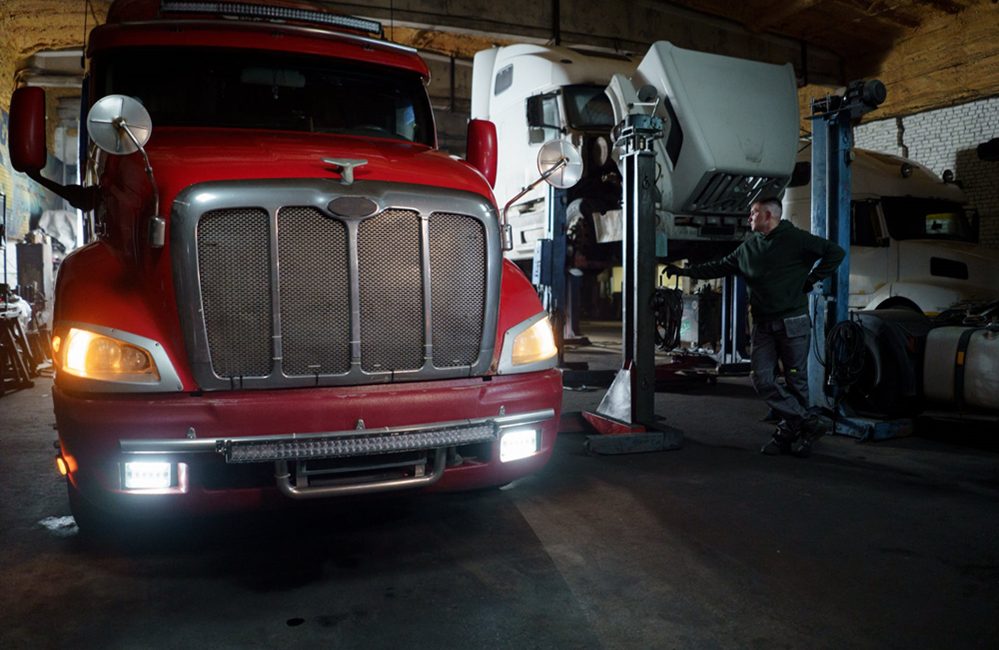As truck drivers or fleet managers in New South Wales (NSW), being well-versed in handling CTP (Compulsory Third Party) insurance claims is crucial. Accidents, though unfortunate, are a part of life on the road. Knowing the steps to take following an incident not only ensures your safety but also streamlines the process of making a CTP insurance claim.

This guide is tailored to help you navigate through these challenging times with clarity and ease.
Understanding CTP Insurance for Trucks
Before diving into the claim process, it’s essential to understand what truck CTP insurance, often referred to as a CTP green slip for trucks, encompasses. This insurance is mandatory for all vehicles in NSW and covers your liability, and that of anyone driving your truck, for injuries caused to others in a road accident. It does not cover damage to your truck or other vehicles, which is typically covered by comprehensive or third-party property insurance.
Immediate Steps After an Accident
1. Ensure Safety
Before doing anything, assess the situation. Check for immediate dangers like fire, leaking fuel, or traffic hazards. If it’s safe to do so, turn off your truck’s engine, turn on hazard lights, and use road flares or warning triangles to alert oncoming traffic.
Attend to anyone injured. Avoid moving them unless there’s a risk of further harm, and provide basic first aid if trained and necessary. If possible, move to a safe location away from traffic. Encourage other involved parties to do the same.
2. Call Emergency Services
If there are any injuries, potential hazards, or significant obstructions to the road, call emergency services immediately. When speaking to the operator, be clear and concise about your location, the nature of the accident, and any injuries or hazards. Stay on the line and follow any instructions given by the emergency operator.
3. Exchange Details
Exchange names, addresses, vehicle registration numbers, and insurance details with other parties involved. If possible, note the make, model, and colour of the vehicles involved. Keep the interaction civil. Avoid admitting fault or assigning blame at the scene.
4. Gather Evidence
Take clear photos of the accident from different angles, showing the positions of vehicles, damage to all vehicles, and any relevant road signs or signals. Note the time, date, weather conditions, and any factors like roadworks or obstructions. If there are witnesses, ask for their contact details. Their accounts can be valuable in the claims process.
5. Report to the Police
In NSW, it’s a legal requirement to report any accident involving injuries or where the other party fails to stop or exchange details. You can report to the nearest police station or use the Police Assistance Line. Ensure you report the accident to the police within 24 hours. Delays in reporting could impact the insurance claim process.
Following these immediate steps meticulously not only ensures your safety and that of others but also sets a strong foundation for a smooth CTP insurance claim process. Remember, your actions in these initial moments can significantly impact the outcome of any subsequent claims or legal proceedings.
The CTP Claim NSW Process
Step 1: Notify Your Insurer
Contact your CTP truck insurance provider as soon as possible. Timely notification is crucial in a CTP insurance claim.
Step 2: Claim Form
Your insurer will provide a CTP claim form. Fill this out with accurate and detailed information about the accident.
Step 3: Medical and Police Reports
Include all relevant medical reports if you or others have sustained injuries. Attach the police report if applicable.
Step 4: Supporting Evidence
Submit any supporting evidence you have gathered, such as photographs or witness statements.
Step 5: Assessment
The insurer will assess your claim. This process may involve reviewing medical reports, vehicle damage assessments, and any other evidence provided.
Step 6: Resolution
Once the assessment is complete, your insurer will inform you of the outcome. If approved, they will guide you through the compensation process.
Tips for a Smooth CTP Claim Process
Be Prompt and Accurate
- Delayed or inaccurate information can hinder the claim process.
Keep Records
- Maintain a file of all documents, correspondence, and evidence related to the accident and claim.
Seek Legal Advice
- If the process becomes complicated or if you’re unsure about any aspect, consider seeking legal advice.
Why Choose Greenslips 4 Earth for Your CTP Insurance?
At Greenslips 4 Earth, we understand the importance of a reliable and comprehensive CTP green slip for trucks. Our CTP Calculator allows NSW drivers to effortlessly compare Greenslips prices from leading insurers, ensuring you get the best deal that suits your needs.
Compare CTP Quotes With Our Greenslip Calculator
Accidents can be overwhelming, but being prepared can make a significant difference. Always remember that as a NSW driver, having a Greenslip or CTP insurance is not just a legal requirement but a crucial part of your journey on the road. Trust Greenslips 4 Earth to assist you in finding the right CTP insurance, offering peace of mind and protection for you and your fleet.





